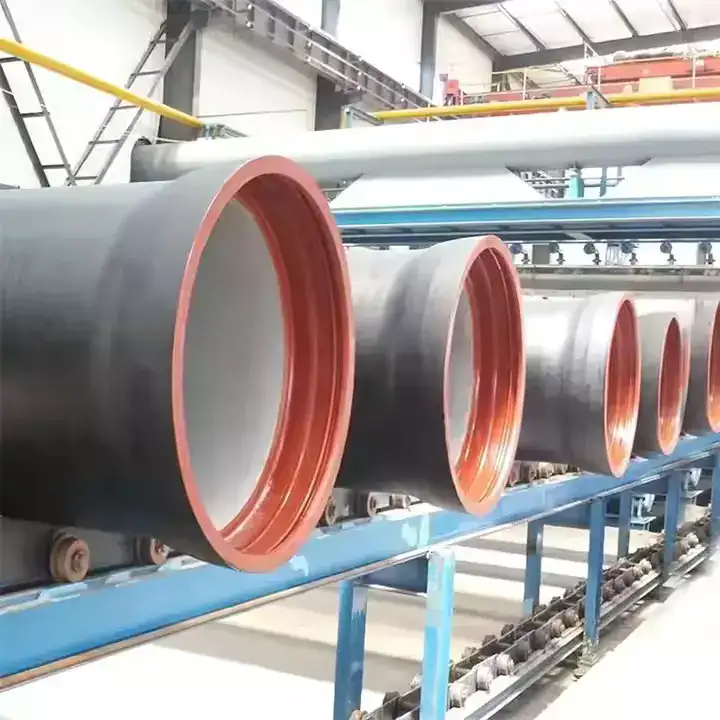Grey cast iron is inherently brittle and exhibits almost no ductility due to its flake graphite microstructure, which acts as stress concentrators under tensile loads. Its carbon content ranges from 2.5 % to 4 % with silicon between 1 % and 3 %, conferring good compressive strength and vibration damping but poor elongation (typically < 1 %) . In contrast, ductile iron (also called nodular or spheroidal graphite iron) contains magnesium-treated graphite nodules that provide elongations up to 18 %, tensile strengths of 60–80 ksi, and toughness comparable to some steels. Malleable iron, produced by heat-treating white iron, offers intermediate ductility (~ 10 % elongation) and is used for thin-walled castings requiring moderate strength and flexibility.

1. What Is Grey Cast Iron?
1.1 Definition and Composition
Grey cast iron, the most common cast iron variant, features a graphitic microstructure that gives a characteristic grey fracture surface. Its typical composition includes 2.5 %–4 % carbon and 1 %–3 % silicon, with small amounts of manganese, sulfur, and phosphorus.
1.2 Microstructure and Ductility
The graphite in grey iron forms as sharp flakes that create stress concentration points, severely limiting its ability to elongate under tension. As a result, grey iron’s elongation at fracture is usually below 1 %, classifying it as a brittle material.
1.3 Mechanical Properties
| Property | Typical Range | Units |
|---|---|---|
| Tensile Strength | 100–450 | MPa |
| Elongation at Break | < 1 % | % |
| Compressive Strength | 600–1000 | MPa |
| Fracture Toughness | 10–24 | MPa·m¹ᐟ² |
| Vibration Damping | High (0.01–0.035) | Loss Coefficient |
Grey iron’s high damping capacity makes it ideal for machine bases and engine blocks where vibration absorption is critical.
2. Understanding Ductility in Iron Alloys
2.1 What Makes Iron Ductile?
Ductility in cast irons is primarily controlled by the shape and distribution of graphite. Spheroidal (nodular) graphite in ductile iron minimizes stress raisers and enables plastic deformation.
2.2 Ductile Iron Composition and Properties
Ductile iron typically contains 3.0 %–3.7 % carbon, 1.2 %–2.8 % silicon, and trace magnesium to form graphite nodules. Mechanical properties for common grades (ASTM A536 65-45-12) include:
-
Ultimate Tensile Strength: 60 ksi (415 MPa)
-
Yield Strength: 45 ksi (310 MPa)
-
Elongation: 12 %–18 %
3. Comparative Overview
| Feature | Grey Cast Iron | Ductile Iron | Malleable Iron |
|---|---|---|---|
| Graphite Form | Flakes | Nodules | Clusters (post heat-treat) |
| Carbon Content | 2.5 %–4 % | 3.0 %–3.7 % | 2.8 %–3.6 % |
| Tensile Strength | 100–450 MPa | 415–550 MPa | 250–450 MPa |
| Elongation (@ break) | < 1 % | 12 %–18 % | ~ 10 % |
| Hardness | 130–310 HB | 150–275 HB | 170–260 HB |
| Applications | Brake rotors, engine blocks | High-pressure pipes, gears | Pipe fittings, brackets |
4. Applications & Selection Guidelines
-
Grey Cast Iron: Best for components requiring high compressive strength, wear resistance, and vibration damping, such as machinery bases, engine blocks, and brake discs.
-
Ductile Iron: Suited for parts needing a balance of strength and ductility, including water and sewer pipes, automotive crankshafts, and heavy-duty gears.
-
Malleable Iron: Ideal for complex, thin-walled castings like pipe fittings, brackets, and hardware where moderate ductility is needed.
5. FAQ
Q1: Is grey cast iron ductile?
No; grey cast iron has a flake graphite microstructure that makes it brittle with elongation typically less than 1 %.
Q2: What is the main difference between grey and ductile iron?
The graphite in grey iron forms flakes (brittle), whereas in ductile iron it forms spheroidal nodules (ductile).
Q3: Can grey iron be made ductile?
Grey iron cannot be directly made ductile, but white iron can be heat-treated (annealed) to produce malleable iron with moderate ductility.
Q4: What applications suit grey cast iron?
Components requiring high compressive strength, wear resistance, and vibration damping—e.g., engine blocks and brake discs.
Q5: How does malleable iron compare?
Malleable iron offers elongation around 10 % and is used for small, thin-walled components requiring some ductility.
References:
- Gray Cast Iron – Wikipedia: Composition, Microstructure, and Mechanical Properties
- ASTM A536 – Standard Specification for Ductile Iron Castings
- University of Cambridge – Graphite in Iron: Influence on Mechanical Properties
- AZoM – Materials Information: Differences Between Gray, Ductile, and Malleable Iron
- MakeItFrom – Gray Cast Iron Properties and Applications

